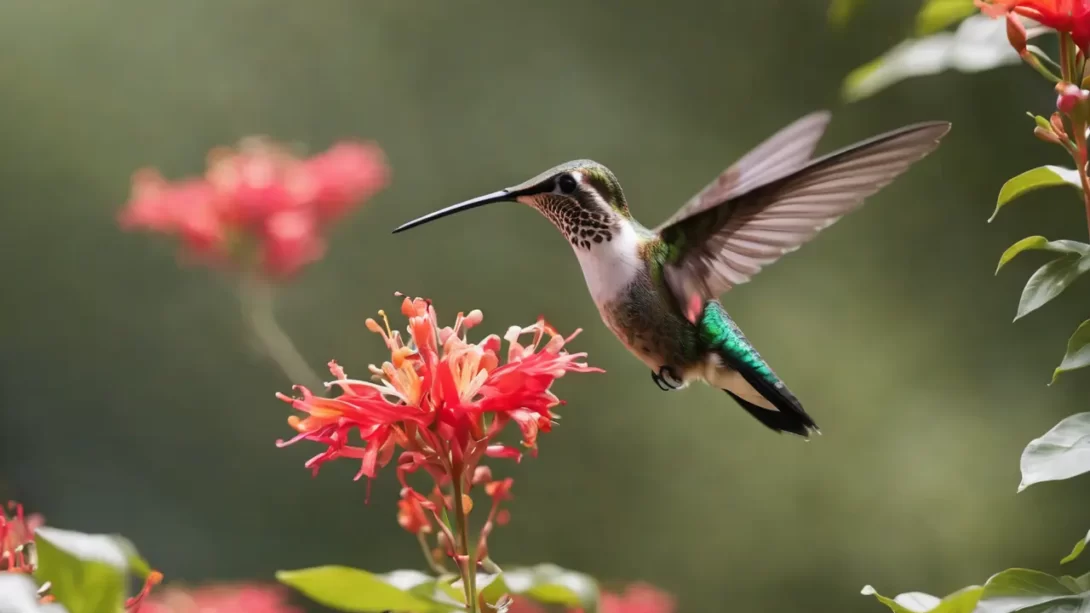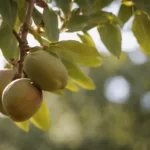Hummingbirds, with their dazzling colors and rapid wing beats, are a delight to any garden enthusiast. These tiny birds are often sought after by gardeners looking to add more life and color to their outdoor spaces. Honeysuckle, known for its sweetly scented and vibrant flowers, is frequently mentioned in discussions about attracting hummingbirds. This article explores the relationship between hummingbirds and honeysuckle, shedding light on why this plant is a favorite among these charming birds.
Hummingbirds
Hummingbirds belong to the family Trochilidae and are among the smallest bird species, known for their ability to hover in mid-air. Their diet primarily consists of nectar, which provides the high energy they need for their rapid wing movements. Hummingbirds are attracted to brightly colored flowers, especially those that are red or orange, and flowers that provide a rich and easily accessible source of nectar. The shape of a hummingbird’s beak is often adapted to the specific type of flower it frequents, making the flower’s structure as important as its nectar content.
Honeysuckle: An Overview
Honeysuckle, belonging to the genus Lonicera, includes over 180 species of shrubs and vines. This plant is celebrated for its tubular or bell-shaped flowers, which come in shades of white, yellow, pink, and red, and are known for their sweet fragrance. Honeysuckle typically blooms from late spring to mid-summer, providing a long-lasting source of nectar. The plant thrives in well-drained soil and prefers a sunny to partly shaded location. Its ability to grow quickly and cover trellises or fences makes it a popular choice for adding both privacy and beauty to gardens.
The Attraction of Hummingbirds to Honeysuckle
Honeysuckle is particularly attractive to hummingbirds due to several key features. Firstly, the shape and structure of honeysuckle flowers are ideal for hummingbirds. The long, tubular blossoms fit the slender, elongated beaks of these birds, allowing them to access the nectar easily. Moreover, the bright colors of honeysuckle flowers, especially the red and orange varieties, are highly appealing to hummingbirds. These colors act as visual signals, guiding the birds to a reliable nectar source.
The nectar of honeysuckle is another significant attractant. It is rich in sugar, which is crucial for hummingbirds’ high-energy needs. This nectar provides an essential food source, particularly during the breeding and migration seasons when hummingbirds require more energy. The abundance of honeysuckle flowers during their blooming period ensures a steady supply of nectar for these birds.
Planting and Caring for Honeysuckle to Attract Hummingbirds
To attract hummingbirds with honeysuckle, proper planting and care are essential. Honeysuckle should be planted in a location where it receives ample sunlight, as this promotes the best flowering. The soil should be well-draining but kept moderately moist. Regular watering, especially during dry spells, will help maintain healthy growth and abundant flowering.
Pruning is also important for honeysuckle, both to encourage new growth and to prevent the plant from becoming too dense. A well-pruned honeysuckle plant not only looks more attractive but also allows easier access for hummingbirds to the flowers. Pruning should be done after the blooming period to avoid cutting off next season’s blooms.
In addition to planting honeysuckle, creating a hummingbird-friendly garden involves incorporating a variety of nectar-rich plants. Flowers such as bee balm, salvia, and trumpet vine can complement honeysuckle, providing additional food sources and attracting a greater number of hummingbirds. By creating a diverse garden with a range of flowering times, gardeners can provide a continuous source of nectar throughout the growing season.
The Benefits of Hummingbirds in Your Garden
Attracting hummingbirds to your garden with plants like honeysuckle offers several ecological benefits. As hummingbirds feed on nectar, they play a vital role in pollination. Their movement from flower to flower helps in the cross-pollination of various plants, contributing to a healthy and thriving garden ecosystem. Additionally, hummingbirds can help control insect populations, as they occasionally feed on small insects and spiders, which are a source of protein.
The presence of hummingbirds also adds aesthetic and educational value to a garden. Observing these birds in action offers an opportunity to witness wildlife behavior and the intricacies of nature. For families with children, this can be an engaging way to learn about the importance of biodiversity and the interdependence of species.
Enjoying Hummingbirds in the Garden
Creating a garden that is attractive to hummingbirds extends beyond planting the right flowers. Providing a source of fresh water, such as a shallow birdbath or a misting fountain, can further enhance the garden’s appeal to these birds. Additionally, avoiding the use of pesticides is important, as they can harm hummingbirds and the insects they feed on.
Gardeners should also consider the placement of hummingbird feeders, which can supplement the natural nectar sources. These feeders need to be cleaned regularly and filled with a simple sugar solution (avoiding red dye) to provide a safe and healthy feeding option for hummingbirds.
Conclusion
Honeysuckle, with its vibrant, nectar-rich flowers, is indeed a favorite among hummingbirds. Planting and properly caring for honeysuckle can turn a garden into a hummingbird haven, offering benefits to both the birds and the garden ecosystem. By understanding and catering to the needs of hummingbirds, gardeners can enjoy the beauty and dynamism these birds bring, while contributing positively to the local environment. Embracing biodiversity in garden planning not only enhances the garden’s aesthetic appeal but also supports the health and balance of the surrounding ecosystem.



